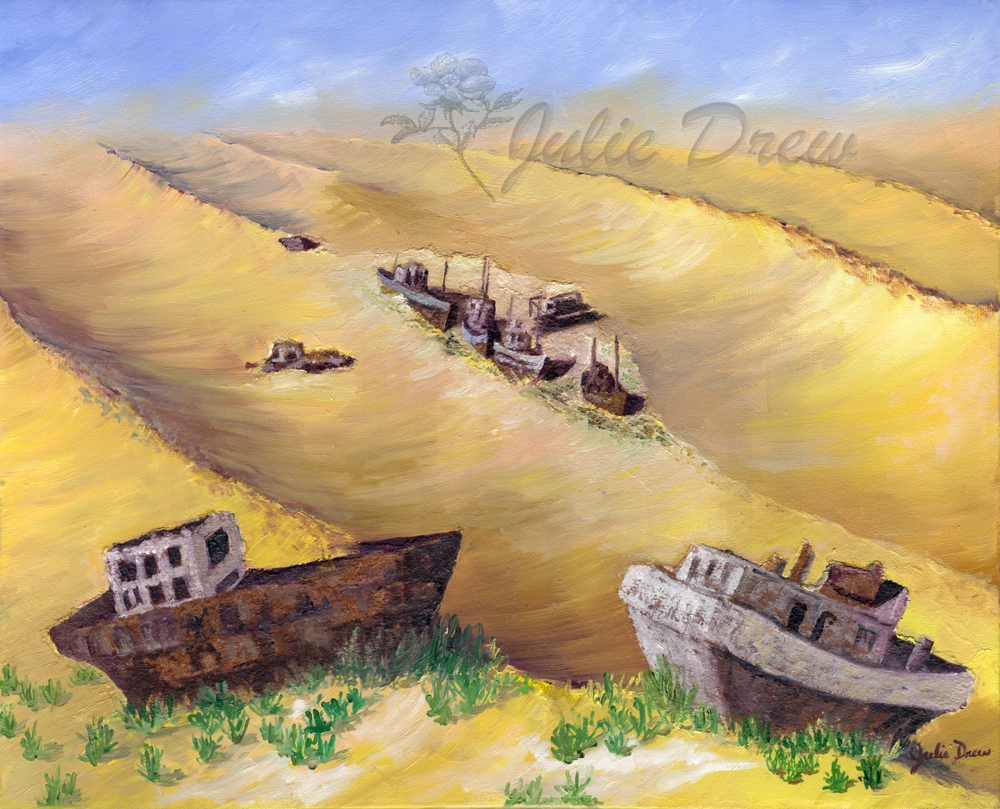The Story of the Aral Sea epitomises our own thirsty search for water other than the living water.
In 1960, just 50 years ago, the Soviet Union began diverting water from the Aral Sea to grow cotton in a dry climate. Their experiment was successful, producing a cotton industry in Uzbekistan to be the third largest cotton exporter in the world. But it did not come without a cost. The Aral Sea was the fourth largest inland sea in the world and supported many small villages with its fishing industry. As the irrigation continued, the sea dried up and so did the fishing. The land became a desert with blowing dust and salt unleashing a scourge of respiratory diseases in Kazakhstan and Uzbekistan. “In Uzbekistan, although prohibited under the Uzbek constitution, there have been estimates that hundreds of thousands of children are forced by the regime to hand pick cotton during the harvest season with little or no pay... Some children miss up to three months of schooling each year while picking cotton. Those who fail to meet their quotas o r pick poor quality cotton are punished by scolding, beating or detention.” – Environmental Justice Foundation Their industry brings death to the land and the life of the people.
Just as God’s living water brings life to our souls, the waters coming back into the northern part of the sea, now called the North Aral sea is slowly bringing life back with it. “A dam built by the World Bank and Kazakh government is slowly resurrecting a small part of the sea, reviving the fishing industry and bringing hope to an area that some expected would simply dry up and blow away in the fierce, salty winds.
“The miracle is a small one compared with the damage that will probably never be undone. Uzbekistan has chosen to keep the lucrative cotton industry going, and to prospect for gas and oil under the exposed seabed.” -Peter Leonard, the Associated Press.
So often in our world the life that God gives is not enough, we want so much more, and we end up with so much less...







